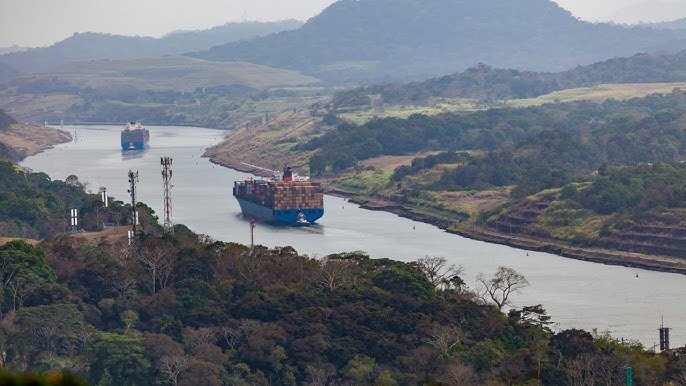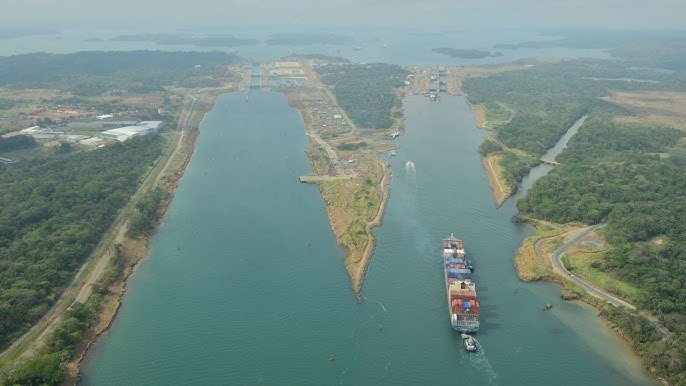In an unexpected and bold geopolitical move, former U.S. President Donald Trump has set his sights on the Panama Canal, signaling a significant shift in U.S. foreign policy. The Panama Canal, one of the world’s most important maritime trade routes, has long been a symbol of global economic power and influence. Now, Trump is positioning it at the center of a strategic confrontation with China, signaling a new chapter in the ongoing U.S.-China rivalry.
The remarks, made during a recent speech, have raised eyebrows and sparked discussions about the future of international trade and U.S. influence in Latin America. Trump’s words have not only captured global attention but also set the stage for a potential reshaping of global power dynamics, with the Panama Canal acting as a pivotal point in this new geopolitical play.
The Panama Canal’s Strategic Importance
For over a century, the Panama Canal has served as a critical link between the Atlantic and Pacific Oceans, facilitating the movement of goods and trade across the globe. Stretching over 50 miles, the canal connects the shipping routes of North and South America, cutting down the travel time for ships by thousands of miles. Its location in Panama, a country that sits at the crossroads of two continents, makes it an incredibly valuable asset, not just for trade but also for geopolitical leverage.
Historically, control over the Panama Canal has been a significant aspect of global influence. The United States took control of the canal in 1904, maintaining its dominance until it was handed back to Panama in 1999 under the terms of the Torrijos-Carter Treaties. Since then, the canal has remained under Panamanian control, but the U.S. has retained significant influence over the region, especially in light of its strategic military presence in Latin America.

In recent years, China has steadily increased its footprint in Latin America, with investments in infrastructure and trade agreements. The country has shown particular interest in the Panama Canal, viewing it as a key part of its Belt and Road Initiative (BRI), which aims to increase China’s global influence through large-scale infrastructure projects. Panama itself has embraced China’s involvement, signing a cooperation agreement in 2017 to enhance trade and connectivity.
Trump’s Focus on China and the Canal
Trump’s comments on the Panama Canal, delivered during a speech at a recent political rally, have been interpreted as a direct swipe at China’s growing influence in the region. “We can’t let China take control of the Panama Canal,” Trump stated emphatically. “This is one of the most important assets in the world, and we must make sure it stays in friendly hands, hands that align with our interests.”
The former president’s statement has sparked a wave of reactions, from policymakers to analysts, all trying to decipher the implications of such a move. Critics argue that Trump’s focus on the Panama Canal may be an exaggerated response to China’s growing presence in Latin America. Still, others view it as part of a larger strategy to counter China’s global ambitions.

China’s influence in the region is undeniable. Through investments in key infrastructure projects and trade deals, Beijing has been gaining access to critical points of global commerce, including the Panama Canal. For Trump, this represents not only an economic challenge but also a security risk. If China were to gain greater control over the canal, the U.S. could find itself at a disadvantage, especially in times of conflict or competition.
Economic and Political Ramifications
Trump’s remarks have wide-ranging economic and political implications. From an economic standpoint, the Panama Canal remains vital to global trade. Approximately 12,000 ships pass through the canal each year, transporting goods valued at over $270 billion. Any disruption to the flow of goods through this vital waterway could have severe ripple effects on global supply chains, particularly in industries like oil, shipping, and agriculture.
Politically, Trump’s focus on the Panama Canal underscores a broader concern about China’s increasing influence in the Western Hemisphere. While many Latin American countries, including Panama, welcome Chinese investments, the U.S. has long viewed the region as part of its sphere of influence. Trump’s remarks appear to be an attempt to reassert American dominance in the region, a stance that may align with his “America First” foreign policy agenda.
Furthermore, Trump’s rhetoric on the Panama Canal highlights the growing tension between the U.S. and China over trade, technology, and military influence. Both nations are engaged in a fierce competition for global supremacy, and the canal represents one of the many battlegrounds where they are vying for control. Trump’s comments suggest that he views China’s involvement in the canal as part of a larger, more aggressive strategy to challenge U.S. influence worldwide.
Reactions from Latin America
The response from Latin American nations to Trump’s comments has been mixed. While some countries in the region, particularly those with close ties to the U.S., have expressed concern over China’s growing influence, others see Trump’s comments as interference in their sovereignty. Panama, for example, has long maintained a neutral stance in its foreign relations and is unlikely to take kindly to external pressure regarding its partnership with China.
Panama’s government has been careful to highlight the economic benefits of working with China, including investments in infrastructure, technology, and trade. In 2020, Panama became the first Central American country to sign a formal trade agreement with China. The government has emphasized that its collaboration with China is aimed at boosting its economy and creating jobs, not at challenging U.S. interests.
However, as Trump’s comments draw attention to the growing competition between China and the U.S. in the region, Panamanian officials may face increasing pressure to balance their relations with both powers. The country’s strategic location and its control over the Panama Canal mean that it will continue to play a pivotal role in this geopolitical contest.
Also read: Samsung S25 Series AI Leaks: A Glimpse of the Future
The Road Ahead
While Trump’s comments about the Panama Canal are undoubtedly provocative, they also reflect a broader trend in U.S. foreign policy: a renewed focus on countering China’s expanding influence. With the Biden administration now in power, it remains to be seen whether the U.S. will take a more proactive approach to safeguarding its interests in Latin America or if it will adopt a more diplomatic stance toward China’s presence in the region.
For now, the Panama Canal continues to be a focal point in the global struggle for influence, with both the U.S. and China vying for control over one of the world’s most vital trade routes. As tensions mount, the future of the canal—and the role it plays in global geopolitics—remains uncertain.
Trump’s remarks, however, have already stirred the pot, setting the stage for future political and economic battles in the region. What’s clear is that the Panama Canal, once a symbol of peaceful trade, is now at the center of a high-stakes geopolitical rivalry, and its future may be shaped by the outcome of this fierce global contest.




